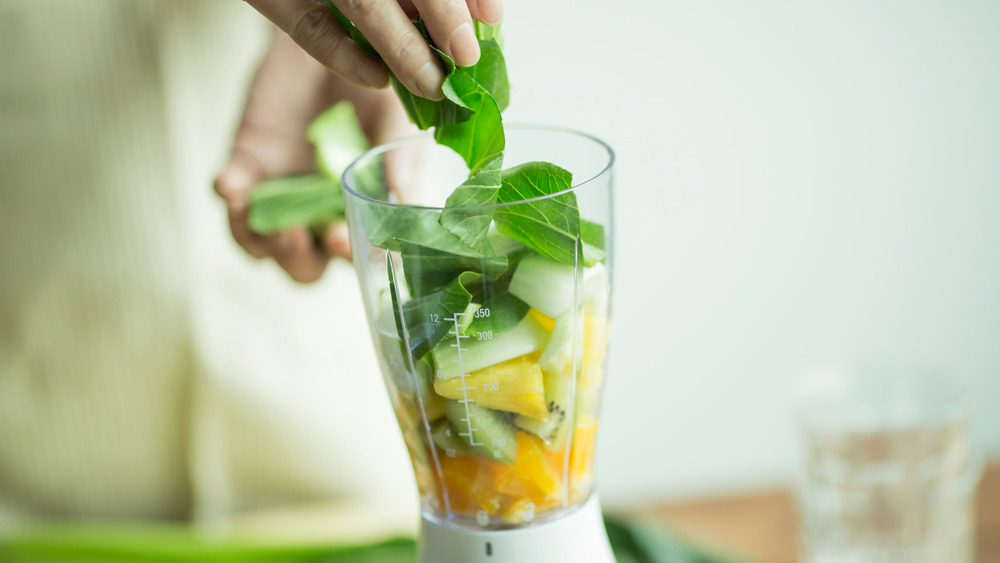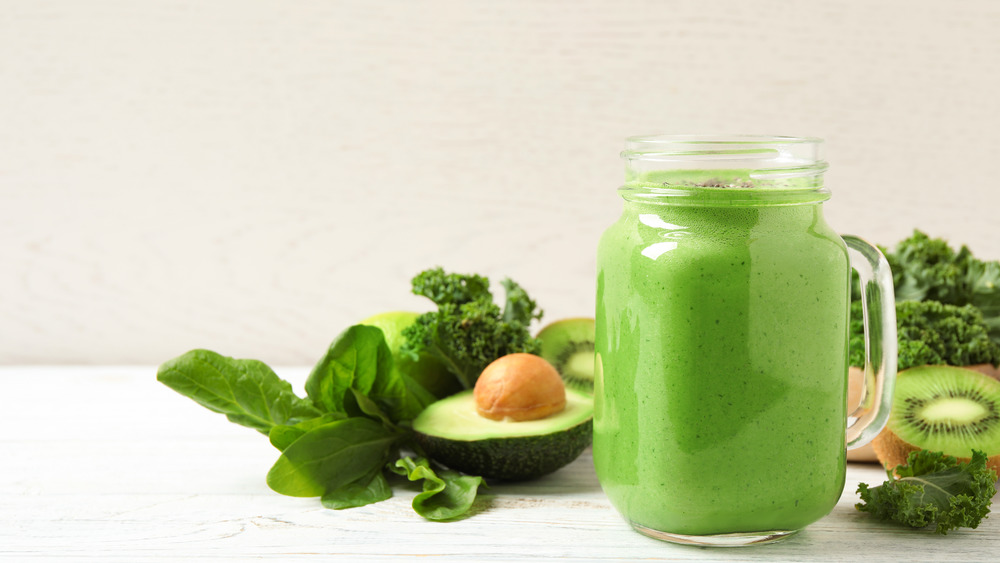You Should Never Make A Smoothie With A Cheap Blender. Here's Why
We may receive a commission on purchases made from links.
Smoothies are a fun way to eat healthy. The only thing that limits the ingredients you can combine in your blender for a flavorful, good-for-you smoothie is your imagination — well that, and the quality of your blender. If you're using a cheap blender, how can you hope to put the "smooth" in your smoothie?
Think about some key smoothie ingredients. Your blender may need to make quick and thorough work of ice, frozen fruits, or stringy, high-fiber vegetables, as New York magazine reminds us. Smoothie makers need to be confident their celery stalks, strawberry seeds, and various added powders will all break down completely and won't leave chunks (via Chowhound). After all, a "chunky smoothie" is an oxymoron.
New York magazine asked experts for their opinions on the best smoothie blender on the market, and their favorite was the Vitamix 750. Nutritionist Molly Alliman told New York she uses her Vitamix every day. "It works for blending big chunks of all frozen fruits, heartier vegetables like kale, whole nuts, and anything else that would leave chunks in other blenders," she said. Chefs and other food experts swear by the Vitamix, including one who said he's used the same blender for 25 years.
The Vitamix Professional Series 750 sounds great, but at $599 it's worth more than some people's cars. Clearly, everyone can't have a Vitamix in their kitchens. What other blenders are up to the task of turning solid food into smoothie?
A cheap blender will work as a smoothie machine — until it doesn't
Morgan Bolling, senior editor at Cook's Country magazine, told Eat This, Not That! you can make high-quality smoothies with a KitchenAid Diamond blender, which sells for about $150 on Amazon. This budget-friendly machine passed a notoriously difficult smoothie test by successfully pureeing kale, which is known for its tough leaves.
Serious Eats featured a head-to-head smoothie competition between high-end Vitamix and Blendtec blenders and sub-$200 KitchenAid and Cuisinart models. Each blender was given the kale smoothie challenge. Serious Eats said the difference in the smoothies was "subtle," which we took to mean "not noticeable for most people." The reviewer did wonder whether the cheaper blenders would last as long as the high-end blenders, under the daily strain of grinding kale.
If you're especially budget-conscious, and fairly industrious, the Six Figures Under blog has some ideas for making your no-frills, garage-sale blender into a smoothie machine. The blogger found that strings of chard would wrap around her cheap blender's blades — that is, until she figured out how to avoid this by freezing her greens first. She also chopped up fruits and vegetables before adding them to the blender, and she made sure her smoothies were extra liquidy, putting less pressure on her ordinary blender motor. Even with all that extra work, Six Figures Under's basic blender died after 11 months. Then this frugal blogger went ahead and got a Blendtec.

